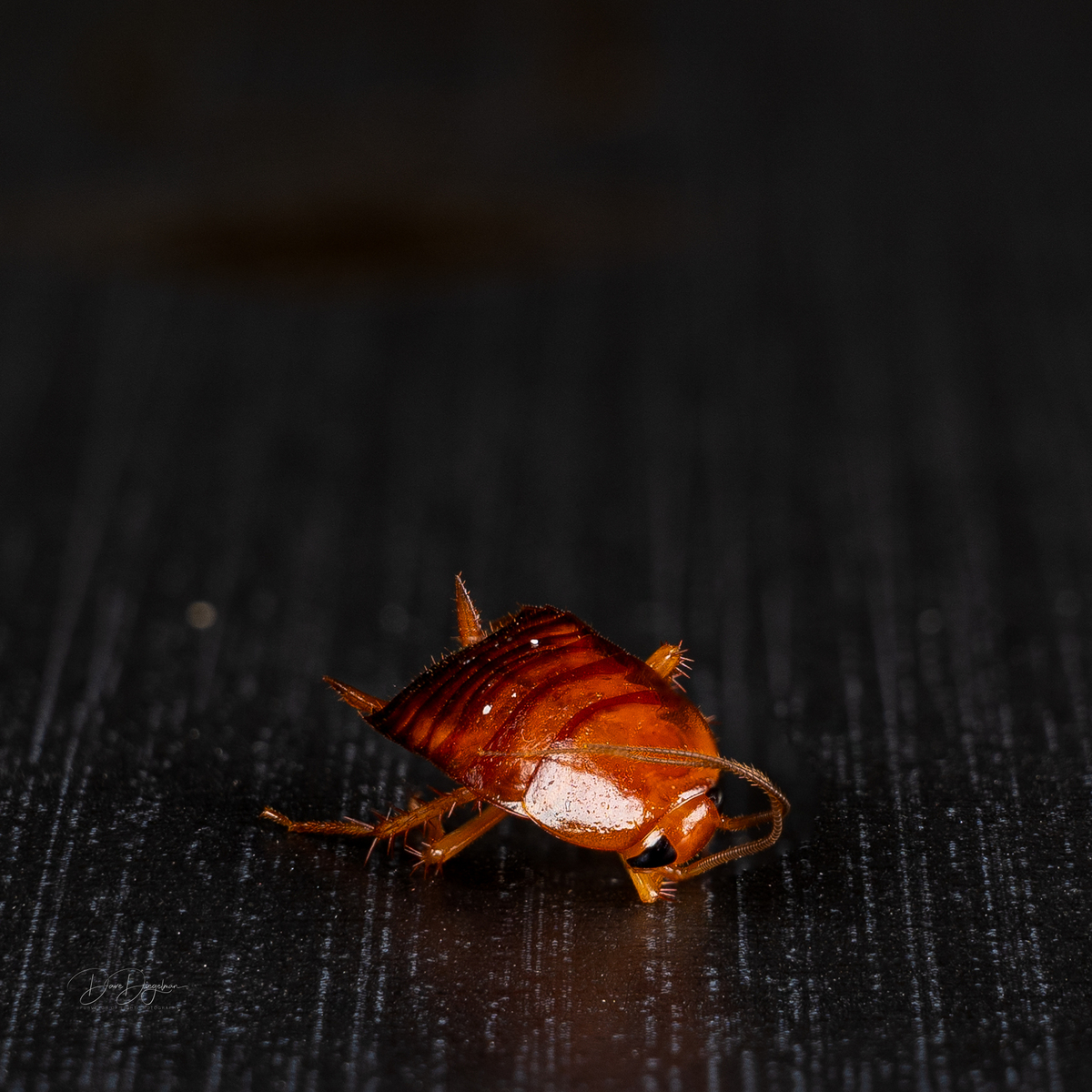Wanted: Dead or Alive—The Viability of Cockroaches: A Narrative from the Compost Heap
Wanted: Dead or Alive—The Viability of Cockroaches: A Narrative from the Compost Heap
Cockroaches are survivors in the truest sense of the word. Long before humans built cities—or even before dinosaurs roamed the earth—cockroaches were already here. Their bodies are simple yet durable, their habits adaptable, and their reproductive strategies nothing short of prolific.
In my compost, I watched them take advantage of every scrap. Banana peels, cantaloupe rinds, wilted lettuce—they devoured it all. What struck me wasn’t just their appetite, but their speed. A single female cockroach, I later learned, can produce dozens of egg cases in her lifetime, each filled with 15 to 40 nymphs. With the warmth and constant food supply of a compost pile, the population could double in a matter of days. No wonder they seemed to appear overnight, their glossy brown bodies moving like a hidden army.
A few years ago I had a pest control company come out to spray the perimeter of our house. When he greeted me, he asked what type of cockroach we noticed, “were they the little German ones or the large Mexican ones?” he asked.
“I’m not sure, I didn’t have a conversation with them” was my reply. At night, they simply scampered all over our patio—both large and small.
Back at my compost container, what at first felt like an infestation soon revealed itself as efficiency. These insects weren’t invaders—they were workers, doing what they had evolved to do: recycle waste back into the cycle of life. The more I observed, the more I realized that cockroaches are among nature’s most effective decomposers. After some initial research I found that in living ecosystems, they work alongside fungi, bacteria, and other detritivores to break down organic matter. Their presence accelerates the process, turning what might otherwise rot slowly into nutrient-rich soil. Their pings, rich in nitrogen, act as natural fertilizer, feeding the very plants that will one day feed us again. It’s a perfect cycle: scraps to soil, soil to plants, plants to scraps, scraps back to soil. In that cycle, the cockroach is not a villain but a vital participant. And cockroaches aren’t just contributors to compost heaps. In forests, they recycle fallen leaves and dead wood. In deserts, they feed on dry plant matter that few other organisms can digest. Even in cities, as much as we dislike their presence, they reduce the mountain of organic waste humans produce.
My perceived problem with my backyard compost bin was really twofold: first, I had no desire to see them creeping into my greenhouse, and second, I couldn’t help but feel uneasy watching them multiply in the compost, imagining they’d escape through the tiny air holes and take over my yard.
Thankfully, this wasn’t a complicated issue to tackle. These tiny guys had no reason to venture out of their little sanctuary into the hot, dry heat of Southern Utah’s summer. They had everything they needed to thrive right in their little compost box. Over time, I’ve learned that any imported soil—compost included—needs to be mixed with our local red sand. A neighboring gardener first suggested this after I kept struggling with my store-bought soil, which looked more like shredded bark and sticks than real soil and allowed too much air around my plants’ roots. Sand was the solution, and my plants thrived once I folded it in.
Enter Phil—my trusty $10 garage sale wheelbarrow, with his name scrawled on the side in faded handwriting. Unlike my old, retired wheelbarrow (a rickety thing with a flat tire and bent brackets that caught on every bump), Phil has become a faithful partner in what I jokingly call my “$1,000 tomato scheme” (yes, that’s what the cost of my first harvest really came to!). Phil was ideal for mixing sand into my compost and, as it turned out, for keeping cockroaches out of my greenhouse—sort of.
Under the hot Southern Utah sun, I discovered that letting cockroach-infested soil sit in Phil for a few days before use went a long way toward preventing a full-scale invasion of my greenhouse—my own sovereign little nation. I even started to think of it as “border control,” stopping these tiny “illegal immigrants” from overtaking my sacred space. The surprise, though, was just how tough they were. Even after baking in dry soil for a couple of 100-degree days, many of them were still alive. These little survivors are nothing short of incredible.
That led me to my next idea: diatomaceous earth. After doing some research, I found it was safe for my earthworms and plants, which was critical. DE works by dehydrating the exoskeletons of insects, but earthworms, with their thick, mucus-covered skin, are unaffected. In fact, they can even ingest it and use it as grit in their digestive systems. So while it’s lethal to skeletal-bodied pests, it leaves my beneficial worms unharmed. Perfect. That meant I could finally tackle the cockroach problem without worrying about compromising the life in my soil.
It seemed the very traits that made cockroaches so reviled—their toughness, their appetite, their resilience—were exactly the qualities that made them commercially viable. Of course, there is one problem that no amount of scientific promise can easily overcome: human perception. Cockroaches trigger an almost universal reaction of disgust. They are associated with filth, disease, and urban blight. The thought of cockroach protein powder in a smoothie or cockroach oil in a skin cream makes many people recoil—myself included. But history is full of foods and products once considered unthinkable. Lobsters were once “poor man’s food,” fed to prisoners in colonial America. Sushi was dismissed as strange and unappetizing in the West just a few decades ago. Now both are culinary staples. If cultural attitudes can shift for lobster and raw fish, perhaps one day they can shift for cockroaches.
For now, the path forward may lie in disguising their origin. Cockroach protein powder doesn’t need to look like an insect—it can look like any other fine powder. Chitosan doesn’t need to remind us of an exoskeleton—it comes as a tasteless, odorless additive. As the world faces mounting waste, shrinking farmland, and the need for sustainable resources, cockroaches may move from the shadows of our fears into the spotlight of our solutions. They are already proving themselves in waste management, animal feed, pharmaceuticals, and biotechnology. They are working quietly in backyards, forests, and deserts, keeping the balance of life intact.
In the end, cockroaches don’t need our approval to survive—they’ve done so forever. The real question is whether we can learn to accept and even embrace their role. My compost heap taught me that behind our disgust lies an extraordinary truth: cockroaches are not the enemies we imagine, but allies we’ve overlooked. They are, in their own way, perfect recyclers and models of resilience.
When I look at them now in my little compost boxes, I no longer see intruders. I see partners in the cycle of life. Perhaps one day, the world at large will see them the same way—not as symbols of decay, but as icons of survival, utility, and unexpected potential.
ABOUT THE AUTHOR - DAVE DIEGELMAN
PS If If you need help with real estate, give me a call! (435) 703-4041
Categories
Recent Posts












